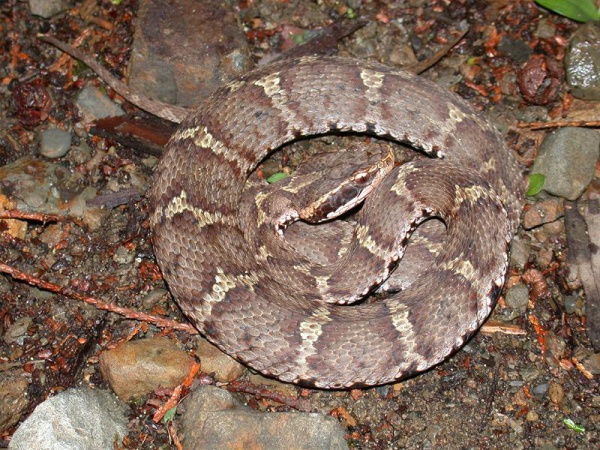Facts About Japanese pit viper
Gloydius blomhoffii, commonly known as the mamushi or Japanese pit viper, is a venomous snake native to China, Japan, and Korea. It ranks among Japan's most perilous serpents, with an estimated 2,000 to 3,000 bite incidents reported each year. These envenomations often necessitate a week of hospital care, and in severe instances, they can be fatal. Annually, around 10 fatalities are attributed to mamushi bites.
The species is named after Jan Cock Blomhoff, the former director of the Dutch trading colony in Nagasaki, Japan. Mamushis typically range between 45 and 81 cm in length, with the longest recorded individual measuring 91 cm. They possess a distinctive body pattern characterized by lateral blotches bordered in black, set against a background that may be gray, reddish-brown, or yellow-brown.
In terms of nomenclature, the snake is referred to as mamushi in both English and Japanese. In Korea, it is known as salmusa or salmosa, and in China, it is called the Qichun snake or soil snake/viper.
Mamushis occupy a variety of habitats, such as swamps, marshes, meadows, open woodlands, rocky hillsides, and mountain rock outcroppings. They are ambush predators, preying on rodents, birds, lizards, and insects. Due to the abundance of rodents, they are frequently found in agricultural areas.
The venom of the mamushi is highly potent, containing hemolytic toxins, neurotoxins, and an anticoagulant. Fortunately, effective antivenom is available in both Japan and China. Nonetheless, severe envenomations can result in serious complications such as kidney failure, visual disturbances, paralysis, and even miscarriage in pregnant women. Treatment generally involves hospitalization, administration of antivenom, and wound management.
Taxonomically, Gloydius blomhoffii shares similarities with cottonmouths and copperheads found in the Americas and was once considered part of the same group.
